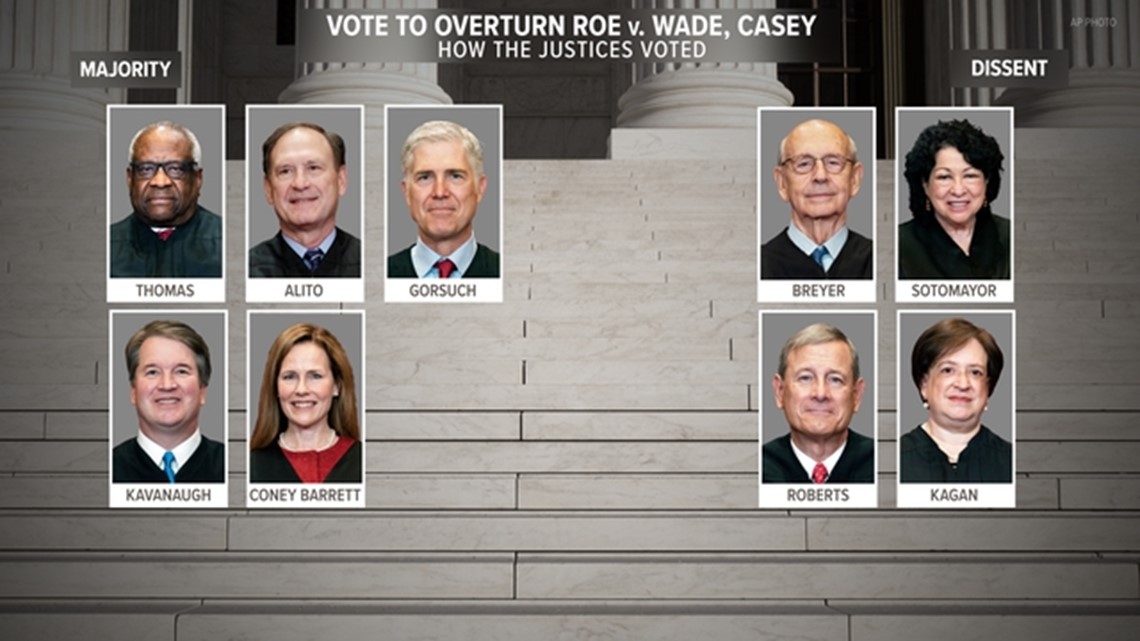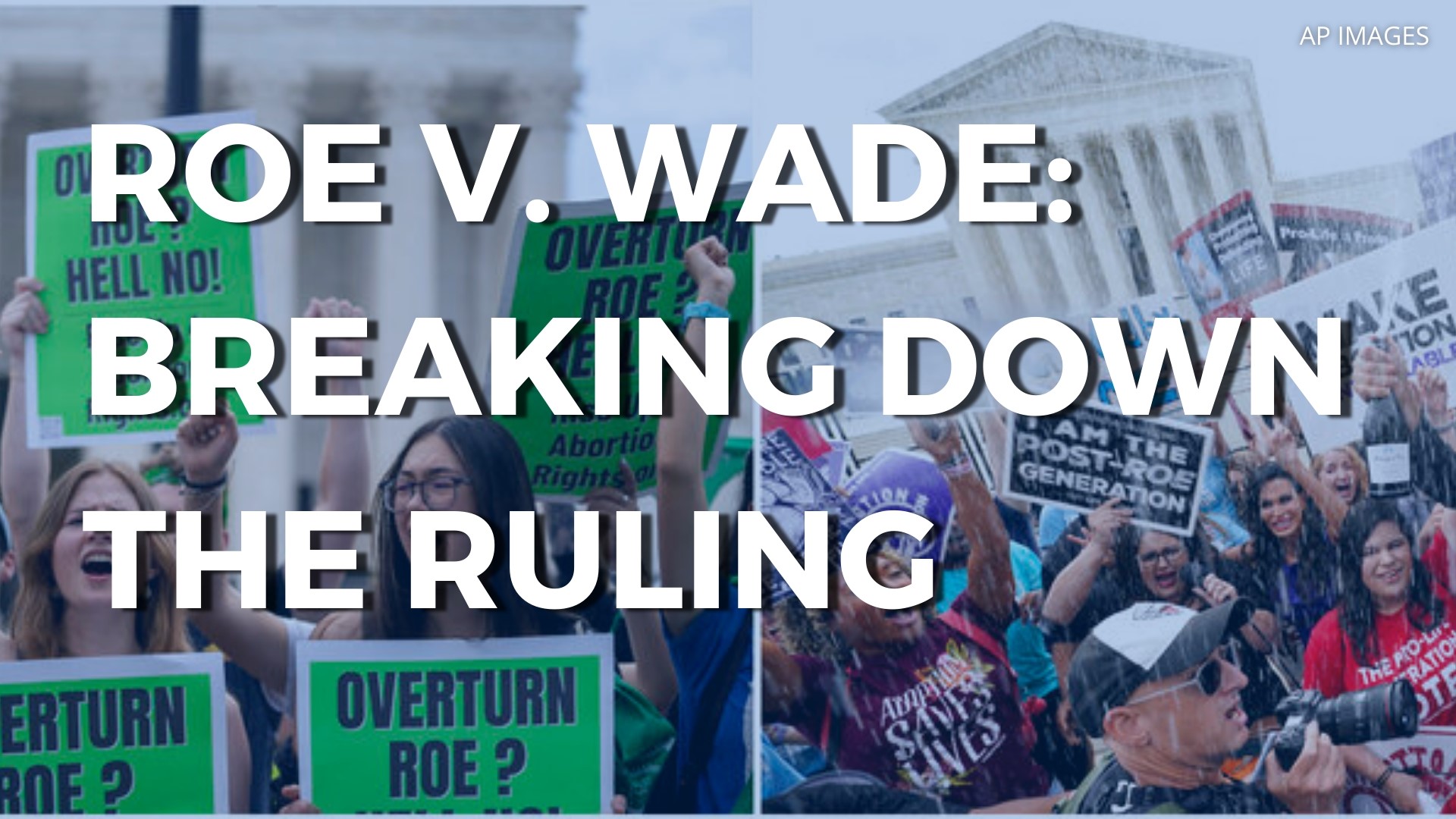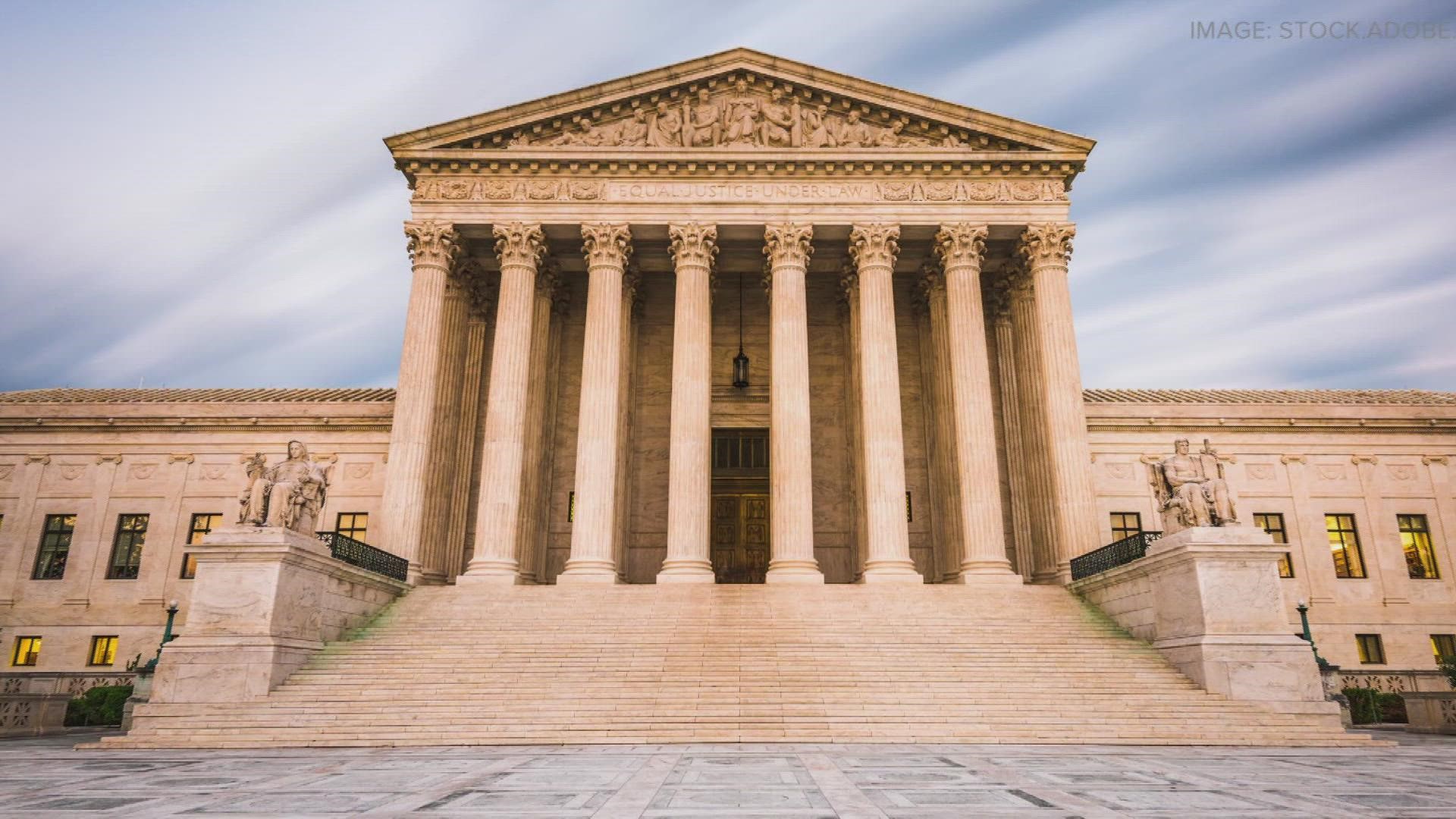GREENSBORO, N.C. — A landmark Supreme Court decision came down Friday. Roe v. Wade is now invalid. Abortions are no longer federally protected in the United States.
State legislatures now have the power to decide to what degree - if any - to allow abortion procedures.
LATEST UPDATES:
- Protestors for and against the decision have gathered outside the Supreme Court.
- President Joe Biden called the ruling overturning Roe v. Wade a 'sad day for the court and for the country' and says the Supreme Court 'took' the abortion right away.
- Nothing is expected to change in North Carolina - for now.
- In light of the decision, Senate Leader Phil Berger and House Speaker Tim Moore, sent a letter to Attorney General Josh Stein, asking him to reinstate the ban on all abortions after 20 weeks.
Friday morning, the Supreme Court published its 5-4 decision on a Mississippi case that ruled the 50-year Roe v. Wade precedent unconstitutional.
Since news of the decision came down, crowds have gathered outside the Supreme Court steps.
This decision came from the Mississippi case Dobb v. Jackson, which challenged a 2018 Mississippi law that banned most abortions after the first 15 weeks of pregnancy.
On Friday, the Supreme Court majority ruled that law is constitutional.
In upholding the Mississippi law as constitutional, the Court also ruled Roe v. Wade is unconstitutional - meaning, the federal government does not have the authority to protect abortions. Instead, states can decide what's legal.
WHO DECIDED WHAT
Chief Justice John Roberts did not agree in blending the new case with Roe v. Wade. Roberts concurred with the majority's basis for upholding Mississippi's 15-week abortion ban but did not join the majority's opinion. He said he agreed part of Roe was unconstitutional but did not think the new Mississippi case had grounds to overturn it.
That's why the decision was 5-4, instead of the expected 6-3. Conservative-leaning justices Clarence Thomas, Neil Gorsuch, Brett Kavanaugh and Amy Barrett formed the majority.
Liberal-leaning justices Stephen Breyer, Sonia Sotomayor and Elena Kagan dissented.


RELATED: Who voted against Roe v. Wade?
ABORTION IN NORTH CAROLINA
It's unlikely we'll see an immediate impact of this ruling in North Carolina unless the state legislature flips heavily Republican in the midterms.
Although the house and senate have a Republican majority right now, they don't have enough votes to overturn a potential governor veto on abortion restrictions.
ROE V. WADE HISTORY
Roe v. Wade originally posed the question to the court...Does the Constitution protect a woman's right to terminate her pregnancy by abortion?
Back in 1973, Justice Harry Blackmun delivered the opinion for the 7-2 majority, finding that it did indeed, with limitations.
The protection had to be balanced against the government's interests in protecting women's health and "the potentiality of human life."
The court said a woman's decision to have an abortion during the first three months of her pregnancy must be left to her and her doctor.
Before the ruling, abortion was broadly legal in only four states and allowed under limited circumstances in 16 others.
Constitutional rights trump state laws, so the court's decision nullified the bans in the remaining 30 states.


